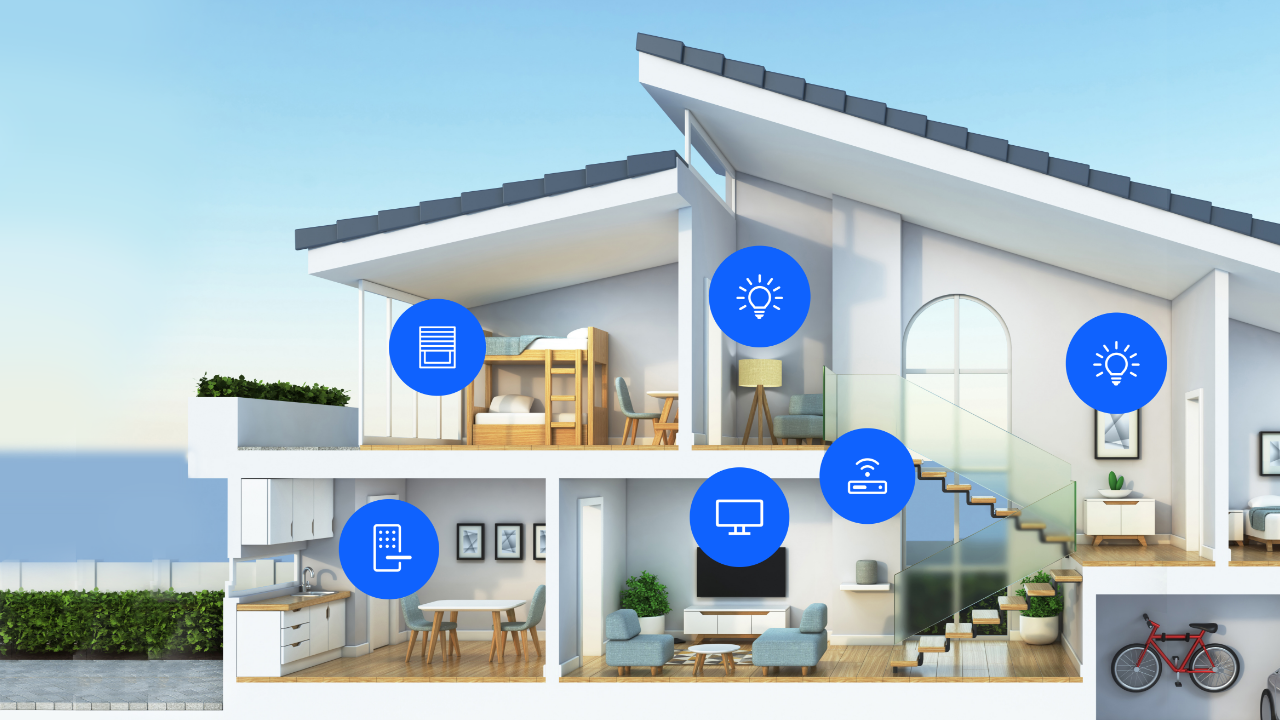Smart Home Automation
Today's smart home automation is becoming a ubiquitous technology-from opening curtains in the morning to adjusting room lights according to mood, smart homes are becoming an indispensable part of our daily lives. Let us use our mobile phone/Ipad or laptop to monitor what happens in the house.
Thanks to the advancement of artificial intelligence and IoT ecosystems, appliances and devices can imitate daily life, and this is just the beginning. Smart home automation is not a vision or fantasy, but a new reality. In the next few years, the concept of an ideal smart home will change the way humans interact with all appliances and devices.
A device equipped with sensors will know whether the activities in the room are normal or if they cause any discomfort to the occupants. Smart devices were once hailed as exclusive to the super-rich, and now most people in the city can easily use them.
Today, customers seek smart home solutions because of the many advantages they bring to users, from energy saving, safety, convenience to advanced aesthetics. The home is now not only automated, but can also intelligently predict consumer habits and use artificial intelligence to create automated applications.
Factors that pave the way for "connected living"
Today, the Asia-Pacific region has become the fastest growing region in the global smart home market. Take India as an example. The adoption of smart home technology in India has changed the lives of 1 billion people through smart devices and electrical appliances. With the growth of the urban middle class and the increase in disposable income, spending on smart home products has increased exponentially. Market demand is combined with some key advancements that will help the entire Internet of Things market, including affordable connectivity and the penetration of smartphones across the country.
According to the report, by 2022, the Indian smart home market is expected to reach approximately US$6 billion, which is twice the estimated US$3 billion in 2020. Globally, this number is expected to reach 53.45 billion US dollars by 2022. India’s smart home market is expected to usher in rapid growth. The Indian government has embraced this lucrative opportunity through large-scale initiatives such as smart city projects, with a budgetary expenditure of US$31 billion from 2015 to 2022. A young population and aspiring background, coupled with affordable prices, are driving the development of smart concepts in the Asia-Pacific region.
Why automate?
The pandemic has changed everything about us in many ways, whether it is the way we work or interact, or the way we daily life. In addition, as people stay indoors more than ever, the pursuit of convenience, safety and comfort through integrated technology products has become a top priority for consumers. Nowadays, consumers prefer smart, connected, energy-efficient home appliances or devices. Therefore, they not only hope to enrich their lifestyles with smart products such as smart sockets, switches and smart gadgets, but also hope to reduce the total cost of ownership.
Many well-known brands are launching wireless solutions designed specifically for various existing houses, creating a way for consumers to turn old appliances into smart appliances in a meager amount. Some top wireless solutions are equipped with interface functions, which allow hybrid installations in buildings, where new structures added can be used with wired automation. Old buildings can be automated using wireless solutions, but they are still on the same platform. The wireless solution is a boon to the existing structure, and automation can be easily adopted without any electrical or structural changes to the existing structure.
Today, in this unprecedented era, the voice technology in products has become a blessing to children and the elderly in the family. Due to the availability of voice assistants, older generations are less inclined to use electronic devices. They can issue commands or add reminders for common tasks, which greatly increases accessibility.
Consumers’ willingness to adopt a connected home ecosystem is on the rise as they realize the benefits of cost savings through energy efficiency, home monitoring in remote locations, increased comfort and convenience, and enhanced home quality.
The smart home ecosystem represents the future. It will predict a person's needs and provide consumers with a more connected, more convenient and smarter lifestyle, and will have the ability to integrate into the smart city of the future. As we enter the "new normal", innovation is bound to increase.
For any product company dedicated to providing real-world solutions, it will become increasingly important to focus a lot of attention on research and development. Innovation not only makes products smarter, but also builds an ecosystem that is conducive to growth and investment.
